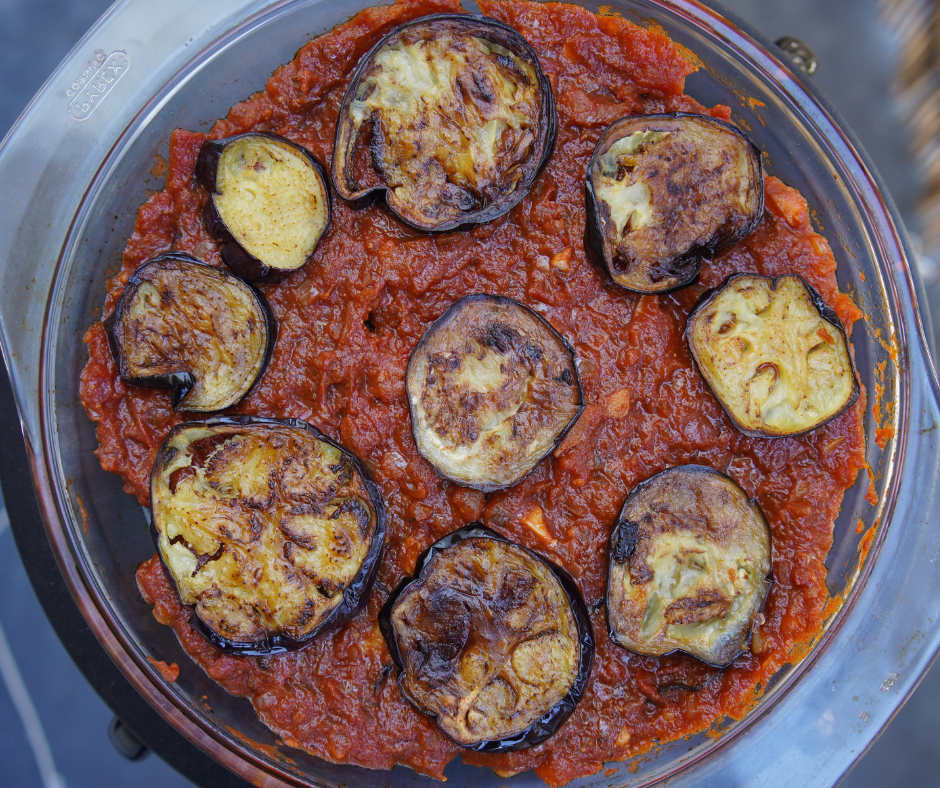Chicken Kedjenou Recipe - A Taste of the Ivory Coast
- Pierce Jones

- Aug 4
- 5 min read
Updated: Aug 6
The perfect one pot chicken recipe that has a ton of flavor, without a ton of labor.

In the lush, cocoa-draped forests of Côte d’Ivoire, where French colonial legacies meet deep-rooted West African traditions, Kedjenou is a dish that feels both ancient and alive. Spicy, smoky, and slow-cooked, this chicken stew is one of the culinary treasures of Ivorian cuisine. It stands out not just because of how it tastes, but because of how it’s made and what it represents.
The Origins of Kedjenou
The word kedjenou comes from the Baoulé people, an Akan ethnic group who migrated into central Côte d’Ivoire from present-day Ghana in the 18th century. The dish was traditionally prepared using a clay pot called a canari, buried in embers with no added water.
The only liquid came from the juices of the meat and vegetables and the steam they released.
Historically, this method of cooking wasn't just about flavor. It was efficient and portable. In rural villages, the closed-pot method allowed farmers and hunters to set the meal to cook while they worked, letting the coals do the rest. The tight seal of the clay pot ensured that no flavors escaped and that everything inside, from the tender chicken to the slivers of onion and tomato, was infused with aromatic intensity.
What’s in a Traditional Kedjenou?
At its core, Kedjenou is simplicity elevated to magic.
Chicken, often a whole bird chopped into bone-in pieces. Traditionally, a lean, local hen or guinea fowl was used. These types of birds benefit from slow cooking to become tender.
Tomatoes, onions, and garlic form the aromatic base.
Scotch bonnet or kpakpo shito peppers, used whole or slit but never chopped, bring heat without overpowering the dish.
Fresh thyme, bay leaves, and sometimes ginger provide earthy complexity.
No water is added. The vegetables and chicken release all the moisture needed.
The pot is sealed, sometimes with banana leaves or even dough, and left to cook over low heat for up to two hours. Traditionally, it is not stirred during this time.
This low and slow technique creates incredibly tender meat and a concentrated broth-like sauce that clings to each piece.
Regional and Modern Variations
In Abidjan and other urban areas, Kedjenou has adapted to modern kitchens. People often use aluminum foil-covered pots or pressure cookers to replicate the sealed environment of the canari. While purists insist on using native clay pots over charcoal, these adaptations are practical and still deliver exceptional flavor.
There are also regional variations.
Kedjenou de pintade is made with guinea fowl and is often favored for special occasions.
Kedjenou de cabri substitutes goat meat, especially in northern regions.
Seafood kedjenou appears in coastal communities near Grand-Bassam. In these versions, firm fish such as grouper or barracuda is cooked using the same sealed technique.
In some homes, a spoonful of djansang (African nut paste) or ground akpi seeds is added for additional depth. These additions are especially common among Ivorian cooks with roots in neighboring Cameroon or Gabon.
What to Serve With Kedjenou
The most traditional accompaniment is attiéké, a fermented cassava couscous that is light, slightly tangy, and perfect for soaking up the sauce. Attiéké has its roots among the Ebrié people, who are indigenous to the coast, and it has become a national staple.
It is usually steamed and served with a drizzle of palm oil and raw onions on the side.
Kedjenou can also be served with:
A bed of white rice, especially in cities where attiéké can be more expensive or harder to find.
Boiled yam or plantains, common in rural or northern regions.
Foufou, made from pounded cassava or yam, although this is more commonly served with palm nut or okra-based stews.
What Makes Ivorian Cuisine Special
Ivorian food, like much of West African cuisine, is communal, bold, and seasonal. However, what sets it apart is its rich mix of ethnic traditions expressed through one national cuisine.
Each group brings unique ingredients and techniques to the table.
The Baoulé are known for slow-cooked dishes like Kedjenou and peanut-based sauces.
The Senufo in the north rely on grains such as millet and sorghum and are known for dry-season preservation techniques.
The Agni and Attié contribute herbal stews and fiery pepper sauces.
Along the coast, Akan traditions blend with European influences, especially in seafood and smoked fish dishes.
French colonialism also left its culinary imprint. Baguettes are sold from roadside stalls, Maggi cubes are found in nearly every sauce, and mayonnaise or mustard occasionally accompany attiéké-fish plates. Yet despite these outside influences, Ivorian cuisine remains deeply rooted in local tradition. It reflects the land, the climate, and the culture of each region.
Chicken Kedjenou Recipe
Prep time 15 mins | Cook time 1.5 hours | Serves 4-6
Ingredients:
1 whole chicken (about 1.5–2 kg), cut into 8 bone-in pieces
2 large onions, thinly sliced
3 ripe tomatoes, chopped
1 small eggplant, peeled and chopped (optional but traditional)
1 red bell pepper, sliced
3 cloves garlic, minced
1 thumb-sized piece of ginger, grated
2–3 whole Scotch bonnet peppers (do not cut or they’ll make it too spicy)
1 teaspoon dried thyme
2 bay leaves
1 chicken stock cube (Maggi is commonly used in Côte d’Ivoire)
2 tablespoons palm oil or neutral oil (optional)
Salt to taste
Instructions
Modern Stovetop or Dutch Oven Method
Prepare the Pot: In a heavy-lidded Dutch oven or thick pot, layer the chicken skin side down, onions, tomatoes, eggplant (if using), bell peppers, garlic, and ginger. Add thyme, bay leaves, whole Scotch bonnets, and the stock cube. Do not add water.
Seal and Cook Slowly: Cover the pot tightly with a lid. For extra sealing, you can wrap the lid rim with foil or place parchment paper underneath. Cook over very low heat for 1.5 hours. Do not open the pot or stir. Occasionally shake the whole pot gently to prevent burning.
Check for Doneness: After 1.5 hours, remove from heat and carefully open the pot. The chicken should be fall-off-the-bone tender and sitting in its own aromatic juices.
Adjust Seasoning and Finish: Stir gently and season with salt if needed. If you like, drizzle in a little palm oil or olive oil for richness.
Traditional Firewood Clay Pot Method
Use a canari (West African clay pot) and layer the ingredients as above.
Seal the pot with banana leaves, dough, or foil.
Bury the pot in hot charcoal embers or a covered wood fire and cook undisturbed for 1.5 to 2 hours.
Open and serve directly from the pot.
What to Serve With Kedjenou
Attiéké (fermented cassava couscous): Steam and fluff, then serve on the side with raw onion and a touch of palm oil.
Boiled plantains or white rice: Either makes a perfect base for soaking up the sauce.
Foufou: For a heartier, traditional touch.
Tips and Notes
Do not chop the Scotch bonnet unless you want it very spicy. Leaving it whole allows the pepper’s aroma to infuse without overpowering the dish.
Eggplant is optional but adds body and silkiness. Some cooks mash it into the sauce before serving.
Some Ivorian cooks add a touch of ground akpi (bush mango seed) or djansang paste for umami, though this is less common in home kitchens outside West Africa.



Comments